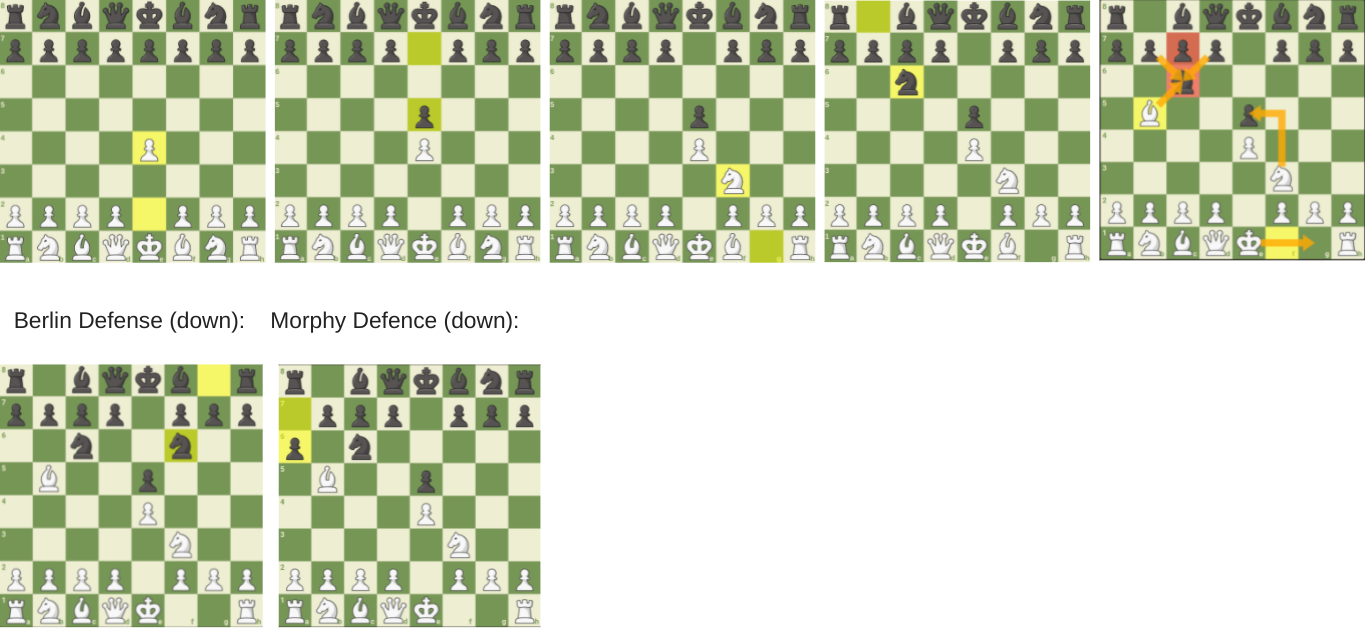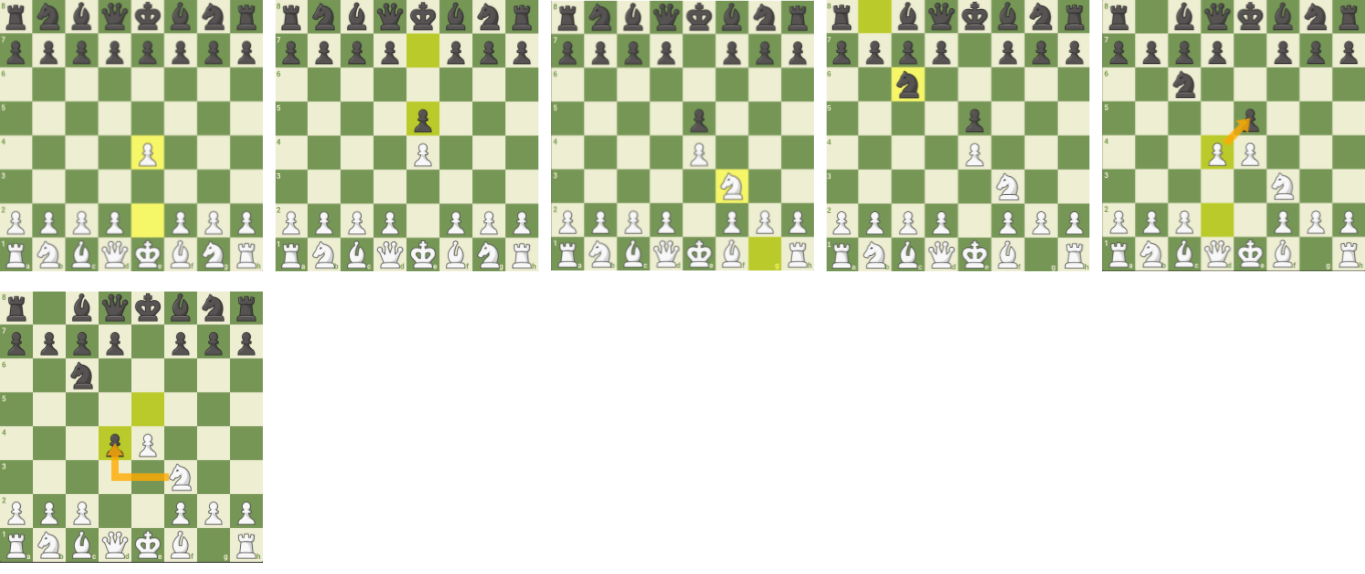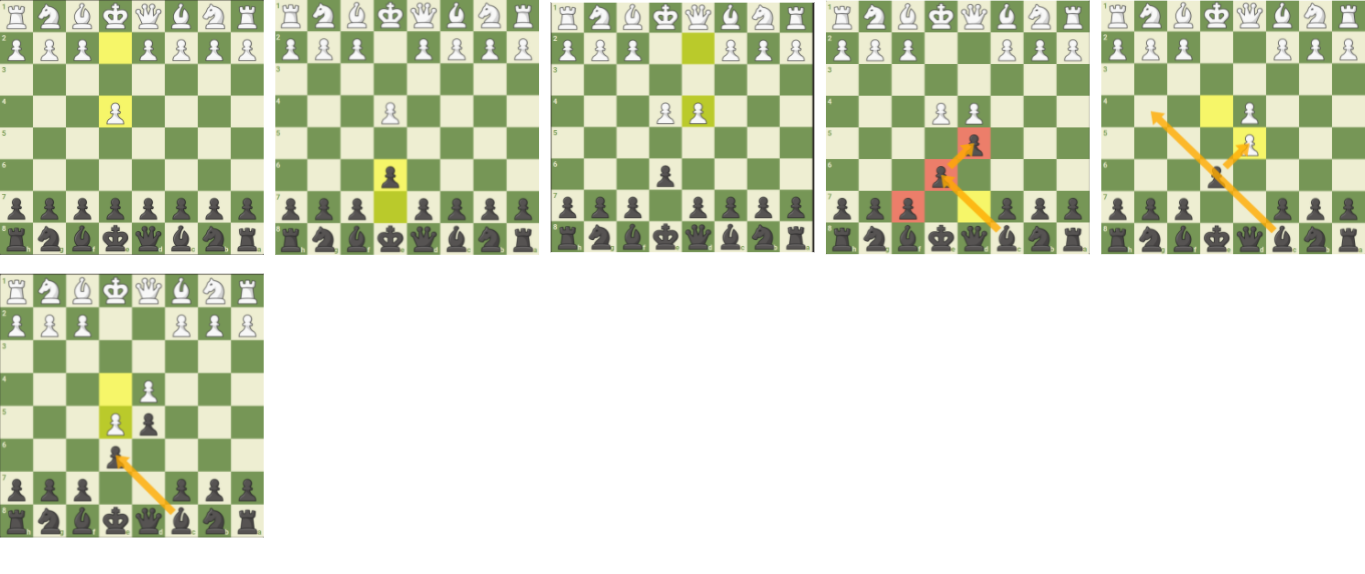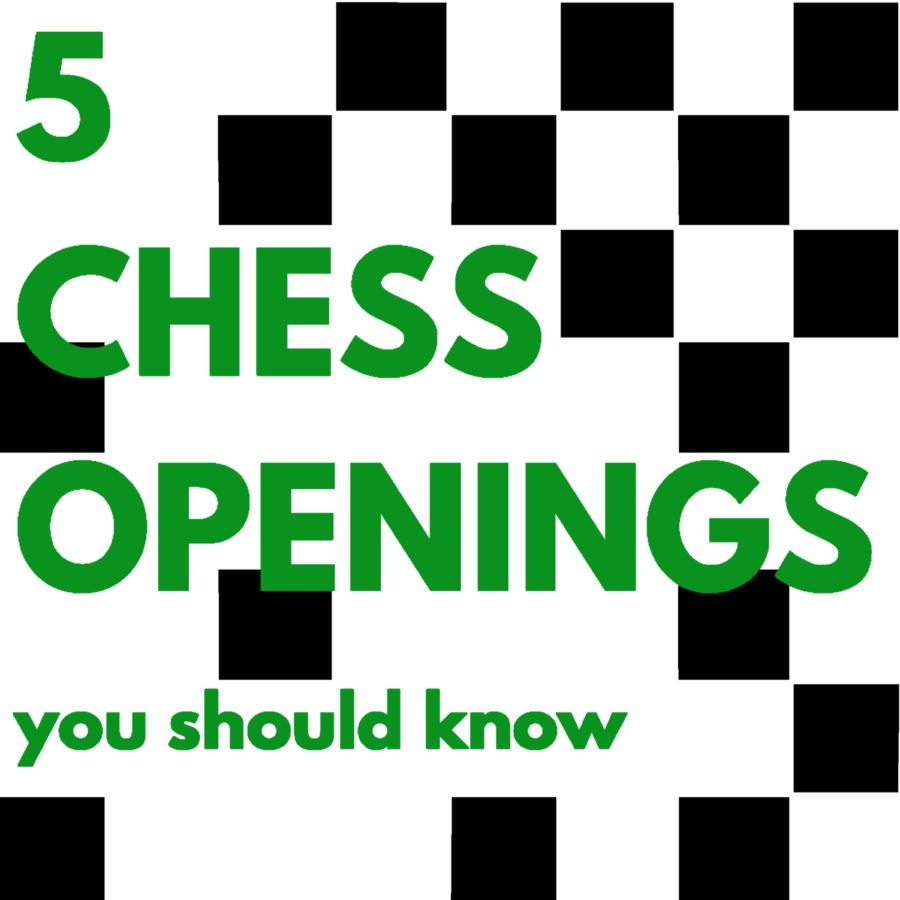5 Chess Openings You Should Know
November 8, 2021
Openings are an essential part of chess games that can make or break the result of a game. Choosing the one that fits your playing style and work to counter your opponents is an integral skill for a solid chess player to know.
What are openings?
An opening in chess refers to the moves played in the beginning part of a chess game. The goal of a solid opening is to gain a positional advantage, early on in the game. Most opening moves are called “book moves”. These are moves that have been played and studied over and over that these m. There are 3 main goals when playing any solid chess opening: develop your pieces, gain control of a part of the board like the center, and castle. These 3 goals are desired by a chess player of any skill level at the opening of a chess game, and are a surefire way to start the game on the right foot.
Summary
Here is a list of 5 of some of the most common, and useful chess openings, recommended by west’s own chess club members Harrison Liang, and Owen Xiao. This list will include a description of the moves themselves, and the advantages they provide along with pictures of each of the moves to demonstrate how they would look in a real game.
Note: to understand some of the openings it will be useful to have a basic understanding of how to use algebraic chess notation for describing moves, and positions on the chess board.
1, Queen’s Gambit
Most people have heard of the Netflix show called the Queen’s Gambit, this name actually comes from a legit chess opening that many chess players use. It is an especially used opening for beginner players. The Queen’s gambit is one of the most famous openings and one that has a large reputation. White starts off by pushing their Queen’s pawn to d4 in which Black responds by pushing their Queen’s pawn to d5. The main purpose of White pushing the Queen’s pawn is to gain central control of the board. Pieces that are in the center would be able to control more squares compared to pieces in the corner. This move also opens up the bishop on c1, so it can come out. There are moves you can play against it, such as the Queen’s Gambit declined, it consist of the moves 1.d4 d5 2.c4 f3; pushing the queen pawn and the king pawn.

- Ruy Lopez
One of the most popular openings, the Ruy Lopez (also known as the Spanish) has countless variations. The opening starts off with 1. e4 e5 2. Nf3 Nc6 3. Bb5. These moves instantly allow White to castle. One of the most important objectives of a chess opening is to castle. By pushing the knight and bishop, the Ruy Lopez allows white to castle by move 4. The third move by white also threatens the knight on c6. Since the knight on c6 protects the pawn on e5, if white were to take the knight, white would be threatening to take the pawn and have complete center control. Not only does white develop a piece with the move Bb5, it also allows for disruption of black’s pawn structure in future moves by stacking their pawns if white decides to take the knight. Common responses from black to the Ruy Lopez are 3. Nf6 (Berlin Defense) and 3. a6 (Morphy Defense).

- Sicilian Defense
The Sicilian defense is an opening played by black that provides both offense, and defense. The opening isn’t very complicated, with only 2 necessary moves: e4 c5. White moves a pawn to e4 and black moves it’s pawn to c5. This gives black good offensive options, and can force white into either the left of right side of the board. The lack of symmetry also gives black presence in the center. Another benefit of Black pushing c5 is to control the center. Black is also saving onto both of their center pawns, e7 and d7. A few common variations of the Sicilian include the closed variation, 1. e4 c5, 2. Nc3, and the open variation, 1. e4 c5, 2. Nf3 d6 3. d4 cxd4 4. Nxd4. In the closed variation of the Sicilian, Black would aim to build up on the queenside while White would aim to build up on the kingside of the board. In the opened variation of the Sicilian, White has opened up the center. This makes both sides want to attack and control the center.

- The Scotch
The Scotch is another chess opening that is viable for a chess player of any skill level. This opening is a very aggressive opening that White can make. It starts off with 1. e4 d5 2. Nf3 Nc6 3. d4. A benefit of this opening is that White prevents black from having an e5 pawn. It also gives White lots of space in the center. If Black were to respond to these moves by taking on d4, White would have to take back with the knight. A negative of this opening is that White wastes time in the opening by moving the same piece twice. Usually in an opening, you would like to move your pieces once so you don’t waste time developing all of them. However, this opening is still very useful as it comes with many different variations that can result in either side winning the game.
 (White would have to move the knight twice in the opening if black were to take the pawn)
(White would have to move the knight twice in the opening if black were to take the pawn)
- French Defense
The French Defense is another very popular mainline attack for black. It starts off with 1. e4 e6 2. d4 d5. Rather than pushing the pawn 2 squares, Black would push their e pawn just one square. This opening is usually played for players who tend to want to have a slow chess game. There aren’t really many captures and the position ends up being closed for a while. A positive of the French Defense is that a pawn chain is formed. This would ensure a very solid position for Black as the pawns would close the position off. However, a negative on this opening is that it traps the Black’s light-squared bishop. The white bishop wouldn’t have much room to move and would be a very passive piece. If White wants to play a more open game, they should take the pawn. If they would like to play a more closed game, they can just push e6. This opening usually leads to a slow game where the piece placements would be significant.

If White were to take on d5, it would free up Black’s light-squared bishop. This would result in a more open game.
If White were to push the pawn to e5, it would ensure that the light-squared bishop wouldn’t have many options. This would result in a more closed, slow game.
Honorable Mention: The Bongcloud
The past 5 openings are viable and are used by some of the best of the best chess players. These are openings that any beginner chess player should attempt to learn in order to boost their chances of winning a chess game. However, there is still one opening that nearly all chess players have heard of and seen. This opening should only be played by expert players that have spent years studying about chess. This opening is known as the Bongcloud. 1. e4 e5 2. Ke2. There are 3 main goals when playing any solid chess opening: develop your pieces, gain control of a part of the board (usually the center), and castle. After pushing the king, both the queen and the bishop get trapped in. After pushing the king, White isn’t able to castle anymore. The Bongcloud is usually played as a joke or to make fun of the opponent.

Conclusion
In the end, winning a game of chess is dependent on your skill level compared to that of your opponent. A good opening is always important as you can’t gain victory without one. Openings are just a way for someone to start a chess game and gain an early advantage.














